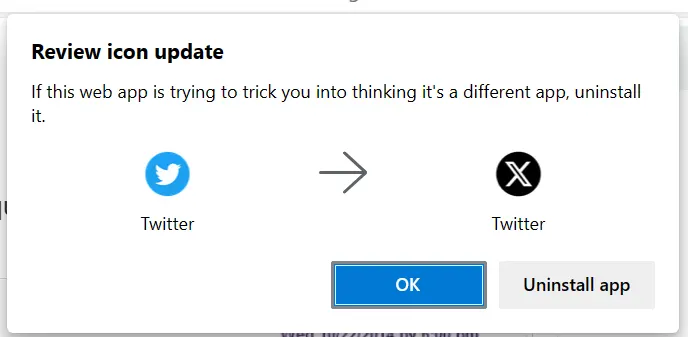Edge suggests you delete the app if you think it’s tricking you.
‘Twitters swift rebrand to X is generating yet another issue. As reported by Bleeping Computer, the social media platform is causing Microsoft’s Edge browser to throw up a warning, indicating some sort of security problem.
It seems to be related to how Edge and other Chromium-based web browsers deal with favicons (or ‘Progressive Web App Icon Change’, if you want to get super technical about it). With the Twitter rebrand being so sudden, Edge likely thinks X is a scam. The security alert prompts users to review the icon update and reads, “If this web app is trying to trick you into thinking it’s a different app, uninstall it.”
But as Bleeping Computer points out, PWA is working as intended. It is supposed to alert you when a website suddenly changes its favicon as that could indicate a potential redirect to a scam website. Presumably, this is temporary and will be fixed quickly. We’ve reached out to Microsoft for comment and will update this story once we’ve heard back.

Florian / X
This is similar to an incident earlier this week, where X was blocked in Indonesia as it has laws forbidding gambling or porn. The X.com domain’s previous owners broke the country’s content laws.
Still, this is yet another indicator of how sudden the Twitter-to-X transition was. Other companies such as Meta and Microsoft already own trademarks on variations of X, which could land Musk’s company some lawsuits. X even ran into trouble when attempting to change its signage at its San Francisco headquarters, as it didn’t have the required permits. The company had to abandon its would-be facelift and leave the old bird logo and the letters “er” intact for a day or so.
The sudden name change is part of a larger plan to turn Twitter into a “super app” that’s similar to China’s popular WeChat. The platform could theoretically be used for payments, messaging and calls in the future.